ROVINAGLIA, Borgo Val di Taro, Parma
The roots of the Brattisani family lie in Rovinaglia, Borgo Val di Taro, Parma, Emilia Romangn, Italy. The other small villages nearby of San Vincenzo and Brattisini also hold the keys to many of the branches of the family who emigrated from here to Scotland and the new world
Borgo Val di Taro is a town on the mountains near Parma. It is located 411 meters above sea level and it is a beautiful place where you can live or go on holiday. Here you can find a lot of attractions, a lovely climate and pristine nature . Borgotaro has got a big historical center with a lot of shops, typical restaurants and two cinemas. The IGP Porcini mushrooms are The Most famous gastronomic product, But if you like here, Also You have to try the “cake of grass” (a characteristic pastry stuffed with herbs), the “St. George’s mushrooms “and the” Amor “.
For people who love sports, there is a net of wide hiking tracks, all marked and safe, and Every year, Especially in summer, Also you can enjoy concerts and events. For more information: Tourist Office Borgotaro 0525-96796 mail uit@comune.borgo-val-di-taro.pr.it
The phenomenon of migration has profoundly marked the history of Borgotaro.
In fact, since the end of the nineteenth century, and with greater intensity after the war, the entire territory was affected by a significant influx.
Thousands and thousands of Valtarese so they are scattered around the world in search of a better state, far from their families and their land.
Some then went home after a few years or even move here to retire, while many have become successful entrepreneurs, artists and celebrities, not ever forgetting their roots.
It ‘s so many who were born Valtarese communities abroad, in Scotland, England and America, most conspicuously, which in fact are still a major force for Borgotaro, and that each year contribute to the development of major projects, particularly within the local the hospital.http://www.comune.borgo-val-di-t
The great variety of environments, concentrated in an area not very large, are of the municipality of Borgo Val di Taro, an ideal terrain for the avid naturalist.
Wet-covered mountain slopes and forests, open woods and sunny, clear streams and impetuous, fields and meadows that have never known chemical treatments, allows the survival of many animal species, some of which are particularly rare or interesting.
The valley is watered by the river Taro alternates riparian forests of poplar, alder and willows, sometimes very large gravel. The former are frequented by birds such as the colorful and eye-catching green woodpecker, the golden oriole and the kingfisher, the second nest inconspicuous species such as Common Sandpiper and Little Ringed Plover. The auction is also the path followed the river from the spring and autumn migrations, in these situations happen to see very unusual birds: storks, cranes, ospreys el’airone red. The most common and therefore easier to observe, the gray heron, night heron, the Gazette and the common tern, which sometimes holds a nest on the islands of gravel created by the wanderings of the river within its bed. The meadows, especially the most barren and dry land dall’upupa beloved, are colored flowers in late spring of hundreds of varieties of flowers, first of all the wild orchids, in the municipality they were no more than forty species, including ofridi beautiful insects that mimic the shape, the large purple orchids, the Trident and yellow orchids of Provence.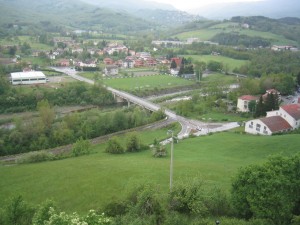
The hillsides and mountains are well exposed are generally occupied by forests of oak, or, if the soil is very clay from turkey, here to accompany the wild pear tree, the service tree, the ciavardello, apple and Florence, among the birds the white warbler, the nightjar, the honey buzzard and the hawk hobby. To observe and learn about these species of birds and some mammals including mention wild boar, roe deer and in addition to countless species of protected wild flowers, the Oasis of Ghirardi, inserted in Oasis WWF Italy, provides teaching facilities and accommodation at Visitor Center located in the town on the road to Pradelle Bardi about 7 Km from Borgotaro. These and many other species, such as the goshawk and the harrier, are protected by the OAS Ghirardi on the road between the WWF and Porcigatone Brunelli, extending over 600 hectares. The protected area, with nature trails and wildlife areas, can be visited all year round. The chestnut, despite its artificial origin is one of the richest forest fauna: the age-old trees and dug in fact offer refuge for owls, titmice, nuthatches, scops owls, dormice and to entire communities of insects in the underbrush you can find small fruits such as blueberry and of course mushrooms and eggs. The top of mountains in the territory of Borgotaro, is one unbroken forest of beech, which in some areas is particularly present in natural conditions or by being accompanied by the abbot white lime, sycamore trees, elm, ash, cherry, rowan tree. Picchi, boars, hawks and even the legendary wolf prefer the beech forest. Above the limit of large trees alternate with grassland with scattered birch heath: the realm of small birds of altitude, the prispolone the Calandro, the Tordela, the redstart, wheatear, is also the hunting ground eagles that sometimes, in summer, it is easy to observe at close range. Blooms that can be admired in these offshore fields are spectacular: gentian, lily of S. John, orchids, violets, butterfly daffodils.
Places of historical and artistic interest to visit, natural beauties to discover and gastronomic delicacies to taste. in the old part of the town visitors can admire: grand renaissance buildings; Saint Anthony’s Church with adjacent tower§; which is the last remaining part of an ancient castle; the church dedicated to Saint Dominic which dates back to 1449; Saint Rocco’s Church; and the church dedicated to Saint Peter; (in Porcigatone), which dates back to a XIII century chapel and which today houses The Crucifixion with Saint Peter and Sant Paul by Giovanni Lanfranco, (1582-1647), one of the main exponents of the baroque in Italy.
In autumn the annual ‘festival of the porcino mushroom’, (boledus edulis) is held in Borgotaro. The area around Borgotaro has been classified as an IGP – a unique area for this particular type of mushroom.
For nature lovers there is the Ghirardi WWF oasis just a few kilometres from Borgotaro. Here, due to the different types of climate in the area, you can see various types of plant species: beech trees and gentians, typical of cold climates, and arboreal heathers typical of Mediterranean climates. The same is true of the fauna – you can spot hares and fallow-deer, or wild boars, foxes and squirrels. You can also hear nightingales and beccaficos singing.
In the area around Borgotaro splintered stones and tools have been found indicating the presence of prehistoric man here as for back as the V millennium B.C., during the Mesolithic era. Tombs and kilns for making bricks have also been found indicating that the area was inhabited by the Ligurians and the Romans.
The town is probably situated on the site of the ancient borough of Torresana, (XI century), which grew around an even older ‘plebs sancti Georgi’, (the community of Saint George), founded by the Saint Colombano monks and which was under the jurisdiction of the Abbey of Bobbio until 1208. From the XII century the territory was governed by various feudal Lords: the Malaspina, Visconti, Landi, and the Fieschi.
After the congress of Vienna, Borgotaro passed under the control of the Duchy of Parma, Maria Luigia, and then in 1860 it became part of the realm of Italy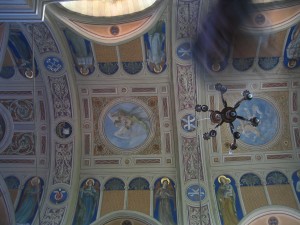
But in addition to close ties with their communities abroad, the City of Borgotaro is twinned, in Italy, with Aprica and abroad with Charenton-Le-Pont (France) and Villa de Cruces (Spain).
Like the famous mushrooms Borgotaro hide among the leaves of autumn, the works of art in this area are a bit ‘hidden, but deserving to be discovered.
And so we propose a mo ‘guide, a small list of the most interesting stops that a tourist (as well as any Borgotarese) should know the historical center.
PIAZZA February-XI THE REMAINS OF THE CASTLE
Castle was, until not long ago, a beautiful castle, which gradually with time and disuse began to disappear.
What remains for us, since the time of World War II, is part of the wall, in coicidenza with the oratory of the church of St. Antonino and rear walls of the museum.
A tower at the entrance, but was brought to light a few years ago, and now helps to understand the visual image which was the castle of Borgotaro.
There are also some interesting descriptions, such as that of the castle at the time of the Fieschi: “It was pretty much surrounded by walls, with a barbican and the pit and had many towers around so they had to battle not to be afraid of a mediocre army and would upside down for several days every attack. ”
XI SQUARE CHURCH OF SAN ANTONIO-February
The first stone of the church of St. Antonino was placed on 30 March 1226, and had three naves divided by two columns and three apses.
In 1500 the question arose of reconstructing the building, perhaps in response to the growing population, but in fact the new church was consecrated, after a long period of decline, in 1667.
The current structure is presented in the form of a Latin cross, and the facade was redone recently, in 1925, when the first Eucharistic Congress Valtarese, sal elevated street level.
Inside, visitors can admire works of great value, above the organ, a Serassi of the thirteenth century.
Among the many paintings, it should be noted the Annunciation, located in the chancel, and has always been considered one of the finest paintings by Borgotaro, dating from the second half of the 600.
Instead of deep Baroque style is the altar of the Cross, in gilded wood and rich ornaments, built between 600 and 700 by Lorenzo Aili.
PIAZZA PALAZZO XI-February TARDIANA
The former hospital building is housed in the old city walls, now demolished, in Piazza XI Febbraio.
There are doubts about the correctness of the now conventional name of “Palace TARDIANA”, but it is certain that this building, very nice, he held, as is still an important role in the country.
The hospital, run by the Brotherhood of the Disciplined, he remained active until the mid dle 1900, when it was sold to the parish of St. Anthony, and the proceeds went to build the new hospital.
After decades of relative neglect, the building was purchased by the Comunità Montana delle Valli del Taro and Ceno, who recently completed the restoration work and has made his home.
THE VALLEY OF VONO Caffaraccia
Caffaraccia, Vona and is reached by a winding road but very characteristic along which, among forests of oaks and cedars, you can still observe the ancient terraces and typical stone buildings covered with sandstone slabs (ciappe).
Rovinaglia is a frazione in the comune of Borgo Val di Taro in the province of Parma, Italy. It is located about 6 km away from the town squar. Rovinaglia is 892m above sea level Today she only has 30 or so families living there.
Rovinaglia is known for its porchini mushrooms and they are searched for by the locals. Rovinaglia is also famous for its scenic views from the mountain side and of the local church S. Pietro Apostolo and the fields which are used for agriculture and farming.
Rovinaglia has a climate which is very common amongst Villages with similar altitudes to it, it has typically hot summers, but compared to the town, is very cool at night, whilst in the winter the temperatures are very low and it usually receives over 2 m of snow at once.
Location Tarrodine Valley, an area assigned by the City of Piacenza during the High Middle Ages to the family of Ena, features a built-up area divided into different groups included in a pristine environment where meadows alternate with woods of oak and chestnut . The current church was renovated and enlarged several times, was built at half of the 500 villagers from the remains of a chapel burned down by bandits during an attack.
From this beautiful region of northern Italy came our maternal grandmother Valentina Brattisani. Her father Joe had already decided to leave the region and had businesses not only in Parma but also in Paris and Edinburgh.
His brothers also left for Scotland as did his cousins, uncles and aunts and they spread themselves quite evenly throughout Scotland. We also know of Brattisanis who left the region for America.
Joe Brattisani was born in the year 1841 and was from the village of Rovinaglia. This Anthony born in the year 1845 may well have been Joe’s younger brother. The grave lies in the cemetery in Rovinaglia today. There are many Brattisani folks who lie here and we have been told by our Italian cousin Luigi Tagliaveni who is a son of Luisa Brattisani, that all Brattisanis are from this region and also that all are very much related, sisters, brothers, aunts, uncles and cousins.
Rovinaglia is 5km south of Borgo Val Di Taro, a town in the south west of Parma province, in the foothills of the mountains that separate that flat part of Italy from the Mediterranean. Rovinaglia sits more than 800 metres above sea level on the western flank of a steep-sided valley down which a stream called the Tarodine flows northwards to join the River Taro, one of those watercourses that for most of the year dawdles halfheartedly across a broad, pebble-strewn bed
Borgataro is a pleasant, unspectacular town, with a network of narrow central streets lined by fine old buildings and little shops, a wide avenue down which one can promenade on Saturday evening as the shadows lengthen. There are the usual industrial and business areas, the usual untidy suburbs. The railway marches across the valley floor on a long viaduct.
Each settlement surrounding the center of Borgo Val di Taro, in a typical installation of the entire valley, is mainly char
TT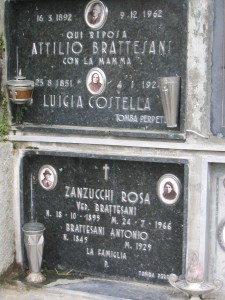 |
- The graves of Anthony and Atillo Brattisani in Italy
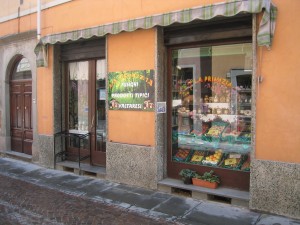
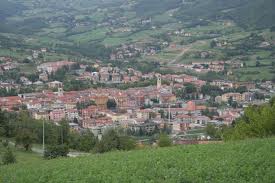
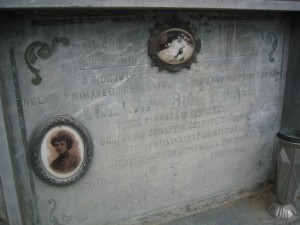
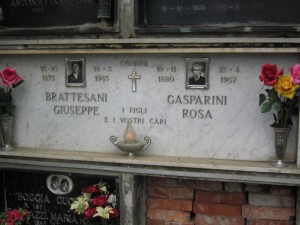
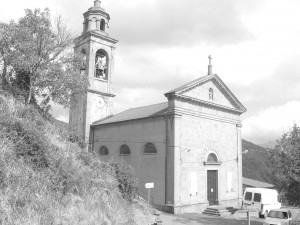
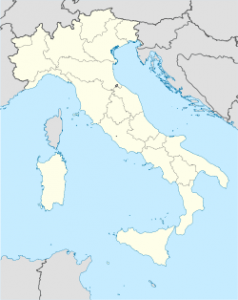
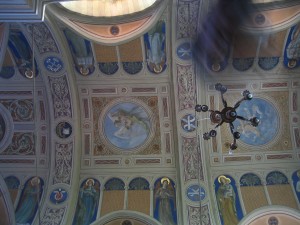
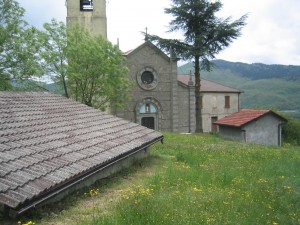
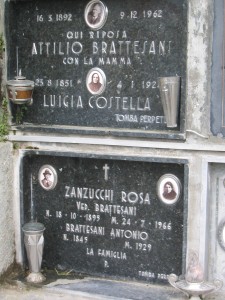
What a wonderful virtual visit I just had through this website. Mille Grazie.
My father was born in Belforte. We stayed in Borgotaro when we visited and had a wonderful trip. It was June. The hotel we stayed at was across from a park, and watching the children play, translating their simple Italian with my Dad’s help, the enjoying the slow delciious culture will remain some of my most cherished memories. Dad had taken me there to visit his family and see the land because he had been diagnosed with cancer. He didn’t have long to live. It was his last trip to Italy, and my first. I hope someday to return and stay in Hotel Firenze again. Maybe next time I’ll figure out a way to stay with family and take part in the Mushroom Festival. Arrevederci!
Your comment is so lovely and also so very sad. Many thanks for taking the time to share your thoughts with us. It is true that the way of life is still sort of unspoiled in Italy. Hotel Firenze may also be on my list in the future.
Hi,
I think it’s wonderfull to see so much great information regarding rovinaglia and borgotaro,
I was born here in London, but went to Italy every year and stayed in our house in Rovinaglia called the school (la scuola) and I had so much family there from Rovinaglia to San Vincenzo to borgotaro and unfortunatly most have pass now but I go there now most years with now my children to give them the special memories I have of the place.
My family’s surname is berni and my fathers name is giuseppe, it’s such a small place that everyone know everyone and it would be nice to share some memories of a wonderfull time.
Thanks for reading.
Marco berni
One branch of my family is Venturini from Borgataro, I believe Valdena. My grandfather, Guiseppi Venturini, was born there in 1888. He had a brother Julio and three sisters including twins. The father was Luigi Venturini. Guiseppi emigrated to the US and ended up in Los Angeles. Julio emigrated to Scotland and operated a fish and chips restaurant. His son Albert Venturini now 81 still lives in Edinbourogh.I am especially interested in finding out when Luigi Venturini was born and when he died. Also, I am hoping to find out Luigi’s wife’s name along with her date of birth and death. Any help would be greatly appreciated. Lastly, my daughter will be in Genoa in June and might be able to visit. Thank You…
My name is Albert Venturini, son of Guilio. All I remember is that my grandfather, Luigi, died during the war years but won’t be able to confirm birth date or death until our next visit to Valdena which will hopefully be summer 2014. My grandmother was Elisabetta Marioni, again unsure of dates until next year. I hope this information is useful. Good luck.
Hi My name is Jayne Orsi, My Mother was a Maria Dellanzo from Rovinaglia, her farther was Giovanni dellanzo, he was one of eleven children, he married his cousin (my nonna) Eugenia dellanzo. They had four daughters, one died after being born, my aunt Gina still lives in Rovinaglia and my other aunt Irma lives in Borgotaro, sadly my mother Maria passed away in years ago.
My father is a Becci and he was born in Valdena, he had an uncle on his maternal side, whom they called Sandi, he lived in Scotland as do some of our cousins, Marioni by surname.
My mum is Luisa Giacopazzi, she comes from Rovinaglia , my sister also lived there for many years she married into the Bardini family, I haven’t been there for many years , my cousin also lives there Rosalba Ruggeri .
Thank you so much for adding another piece of history to the tree. If you would like to share some info and photos I can insert a page in her honour
My name is Sara Dellanzo. My dad; Adelmo Dellanzo is from Rovinaglia, his father Antonio was one of eleven children and was siblings with Giovanni Dellanzo, making my dad and Jayne Orsi cousins. My nonna was called Maria Fontanini who was also from Rovinaglia, she was was 1 of 4 girls, sadly one of which passed away as a young child. We still frequently visit and stay in the home my nonna grew up in.
My name is Carlo Ferrari, my Father was Luigi Ferrari, who was from Rovinaglia. My Nonna’s maiden name was Dora. I stumbled onto your fantastic site here while doing a little family research. I have many memories spending time in Rovinaglia, from a little kid visiting my Nonna, Unlces & Aunts, and cousins to going back with my Wife to spend time in my Father’s cottage with him about 12 years ago now, while he was still alive. We hope to return one day, Thanks again for this informative site.
Thank you so much for leaving this great comment. The family who contribute are the real heroes, wanting to share and preserve their family memories. Any input most welcome Carlo
Hello and thank you Carlo for leaving this very interesting reply. It is great to see all the family links and Ferrari has cropped up a few times. Would love any photos or any other information you would want included. Helen quilietti@icloud.com
My nonna was Angiolina Giacopazzi who married my grandfather Joseph Ferrari. My grandfather’s parents emigrated to Quebec, Canada, where he was born October, 1910. His parents moved back to Italy (San Vincenzo/Borgotaro). My grandfather married my grandmother in or around Borgotaro, 1 son (Jonny) 1 daughter (Maria) and my dad (Peter) whom was born in London, 1939. WWII made my grandmother move back to Italy or be interned in a camp for Italians in Scotland. My dad returned to London when he was around 9 or 10 years age. My dad passed away in April 2022. I want to bring his ashes back to San Vincenzo. Spent a lot of time in Borgo Taro, Rimini, Riccionne, as kids on holiday. Had a great aunt that was a nun on nonna’s side.
Hi I am on Ancestry. I am living in Northern California, I am second generation American.
My Del Grosso family in Brunelli Borgatoro farmed in the region. My Nonno Luigi Del Grosso and my Nonna Angela Maestri came to America on the Dante Allegheri in 1921.
I have documents of his parents also an Antonio/Appolonia married in Tornolo. Other grandfather’s
Antonio Del Grosso and Ana Dallara of Borgo Val di Taro. They had 9 or so children. One was Maria one was Elisabetta.
Ancestry says my DNA is connected to Brattesani’s on both sides.
The Brattesani’s I knew had a restaurant in San Francisco, California He was born in 1931.
Johnny died last summer, he and a Spagnoli had a partnership before it closed.
I am not certain the Del Grosso of 1760 who married a Brattesani and moved to Scotland is my is my link. I beleive it may be. The other connection I am trying to clear is on my maternal link. Maria Parenti married my 2nd great grand father Luigi Maestri he is buried in Cimitario Compiano his Son My great grandfather Francesco Maestri and his wife Antonina are bured there as well. Where is Maria Parenti buried.?
I have very little information on her. born in 1850, She is not the same age as the
Maria Parenti you have on your site married to Clemente; however, I think there is a connection. I recently meet Kat Cardinali on Ancestry and this week found your Rovingalia page. Looking forward to hearing from you.
Perhaps I can’t find her data, perhaps she too was born in France.
Thank you for your very interesting comment. I will need more time to look into this. Our Brattesani/Brattisani family came to Scotland via south of England circa 1845. Many of the family remained in France – with our branch having travelled between Italy, France and Scotland regularly, as the birthplaces of their children tell us. The family is large some settling in London and many to Edinburgh and the East Coast as well as Fife, Aberdeen and so on.